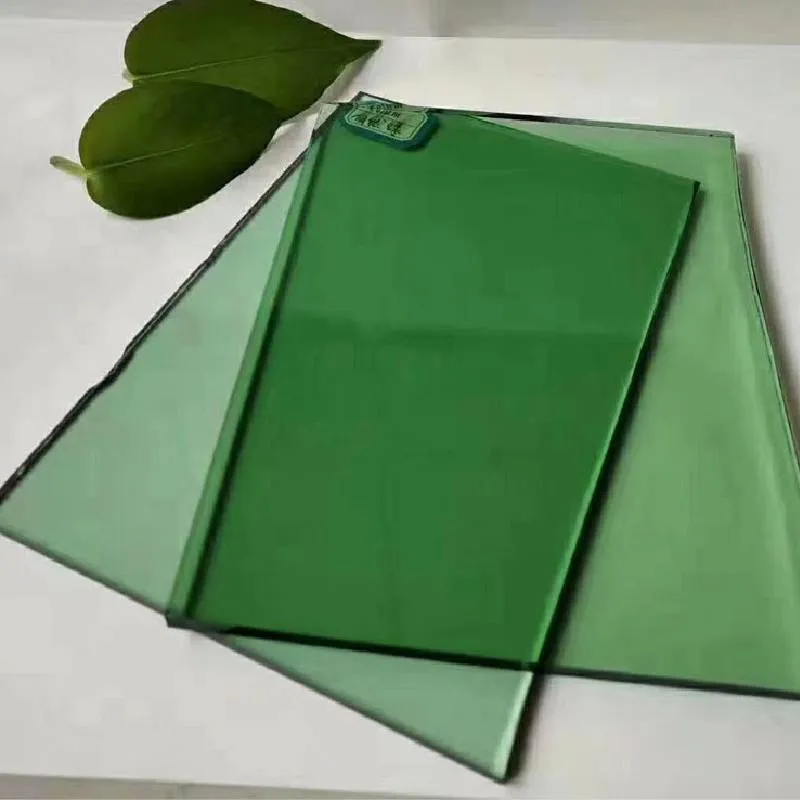Understanding Tempered Glass A Comprehensive Overview
Tempered glass, often recognized for its enhanced strength and safety features, has become a fundamental material in various industries, including construction, automotive, and home design. The production of tempered glass involves a meticulous process that elevates its properties, making it suitable for high-stress applications.
The process begins with standard glass, which is heated to a temperature of about 620 degrees Celsius and then rapidly cooled. This thermal treatment alters the glass's internal structure, creating a layer of compressive stress on the surface and tensile stress within. As a result, tempered glass is approximately five to six times stronger than standard glass of the same thickness, providing greater resistance to impact, thermal stress, and pressure changes.
One of the most significant advantages of tempered glass is its safety feature. When broken, it shatters into small, blunt pieces rather than sharp shards, significantly reducing the risk of injury. This characteristic makes it a preferred choice in various applications, including shower doors, glass facades, and vehicle windows, where safety is a top priority.
tempered glass product data sheet
Moreover, tempered glass is available in various sizes and thicknesses, catering to specific project requirements. It can also be customized with tints, coatings, and patterns, enhancing both aesthetic appeal and functionality. Many products come with optional additional treatments, such as low-E coatings, that can improve energy efficiency by reflecting heat and UV rays.
In terms of performance, tempered glass can withstand high thermal variations, making it ideal for environments where temperature fluctuations are common. This is particularly useful in buildings where large glass panels are exposed to direct sunlight, as well as in automotive applications where heat resistance is crucial.
The tempered glass product data sheet provides essential information regarding its physical properties, production standards, and compliance with safety regulations. Understanding these specifications helps architects, designers, and engineers to make informed decisions when selecting materials for their projects.
In summary, tempered glass is an exceptional material that combines strength, safety, and versatility. Its properties not only enhance the structural integrity of buildings and products but also provide peace of mind regarding safety. Whether used in residential spaces or commercial establishments, tempered glass remains a top choice for those seeking durability without compromising aesthetics.
 Afrikaans
Afrikaans  Albanian
Albanian  Amharic
Amharic  Arabic
Arabic  Armenian
Armenian  Azerbaijani
Azerbaijani  Basque
Basque  Belarusian
Belarusian  Bengali
Bengali  Bosnian
Bosnian  Bulgarian
Bulgarian  Catalan
Catalan  Cebuano
Cebuano  Corsican
Corsican  Croatian
Croatian  Czech
Czech  Danish
Danish  Dutch
Dutch  English
English  Esperanto
Esperanto  Estonian
Estonian  Finnish
Finnish  French
French  Frisian
Frisian  Galician
Galician  Georgian
Georgian  German
German  Greek
Greek  Gujarati
Gujarati  Haitian Creole
Haitian Creole  hausa
hausa  hawaiian
hawaiian  Hebrew
Hebrew  Hindi
Hindi  Miao
Miao  Hungarian
Hungarian  Icelandic
Icelandic  igbo
igbo  Indonesian
Indonesian  irish
irish  Italian
Italian  Japanese
Japanese  Javanese
Javanese  Kannada
Kannada  kazakh
kazakh  Khmer
Khmer  Rwandese
Rwandese  Korean
Korean  Kurdish
Kurdish  Kyrgyz
Kyrgyz  Lao
Lao  Latin
Latin  Latvian
Latvian  Lithuanian
Lithuanian  Luxembourgish
Luxembourgish  Macedonian
Macedonian  Malgashi
Malgashi  Malay
Malay  Malayalam
Malayalam  Maltese
Maltese  Maori
Maori  Marathi
Marathi  Mongolian
Mongolian  Myanmar
Myanmar  Nepali
Nepali  Norwegian
Norwegian  Norwegian
Norwegian  Occitan
Occitan  Pashto
Pashto  Persian
Persian  Polish
Polish  Portuguese
Portuguese  Punjabi
Punjabi  Romanian
Romanian  Russian
Russian  Samoan
Samoan  Scottish Gaelic
Scottish Gaelic  Serbian
Serbian  Sesotho
Sesotho  Shona
Shona  Sindhi
Sindhi  Sinhala
Sinhala  Slovak
Slovak  Slovenian
Slovenian  Somali
Somali  Spanish
Spanish  Sundanese
Sundanese  Swahili
Swahili  Swedish
Swedish  Tagalog
Tagalog  Tajik
Tajik  Tamil
Tamil  Tatar
Tatar  Telugu
Telugu  Thai
Thai  Turkish
Turkish  Turkmen
Turkmen  Ukrainian
Ukrainian  Urdu
Urdu  Uighur
Uighur  Uzbek
Uzbek  Vietnamese
Vietnamese  Welsh
Welsh  Bantu
Bantu  Yiddish
Yiddish  Yoruba
Yoruba  Zulu
Zulu 

